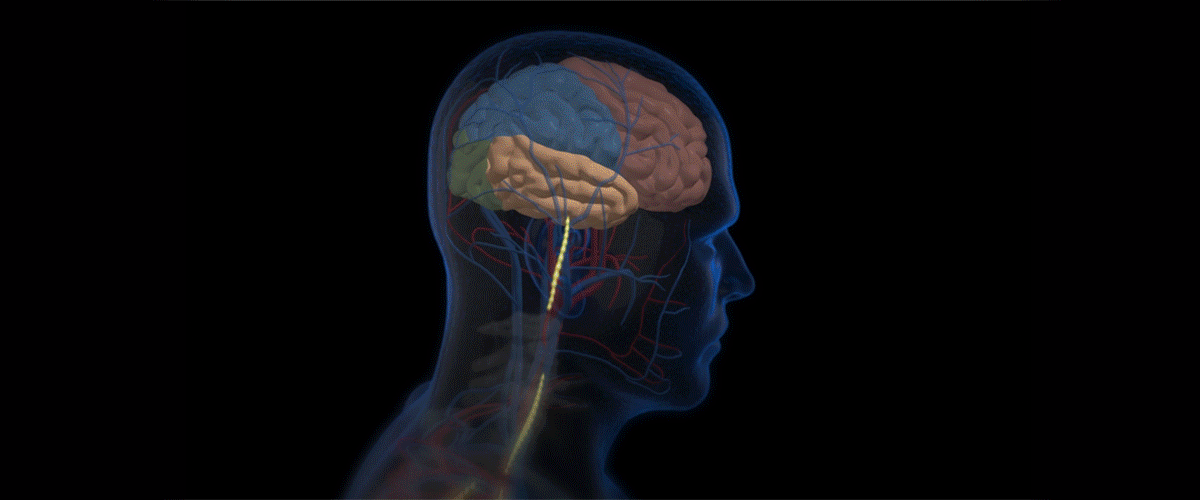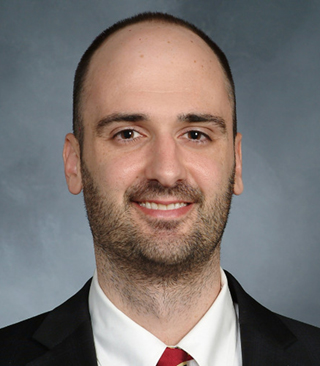An Overdose Epidemic Amid the Pandemic
A leading addiction psychiatrist discusses how the COVID-19 pandemic exacerbated the nation’s substance-use crisis and what addiction does to the brain.

By the beginning of 2020, Dr. Jonathan Avery, director of addiction psychiatry at NewYork-Presbyterian/Weill Cornell Medical Center and founder of NewYork-Presbyterian’s community naloxone trainings, had seen glimpses of hope for the country’s drug-overdose crisis.
According to the Centers for Disease Control and Prevention, there were 4% fewer drug overdose deaths nationwide in 2018 (67,367) than there were in 2017 (70,237), the first year-to-year decrease since 1999. And 14 states and Washington, D.C., experienced lower overdose death rates in 2018 than in the previous year.
Much of this progress was attributed to a series of measures designed to reduce substance use and help wean individuals altogether. Clinicians, says Dr. Avery, were generally prescribing fewer drugs, and individuals who use substances were benefiting from increased access to resources, specifically access to safer, longer-lasting opioid replacements that carry less of an overdose risk and help stabilize the amount of opiates in a person’s body.
The success was short-lived, however, as opioid overdose deaths jumped 7% in 2019. Then, in March 2020, COVID-19 hit.

Dr. Jonathan Avery
“You could see the writing on the wall.”
As Dr. Avery explains, from its earliest days the pandemic provided multiple risk factors for a worsening substance-use epidemic.
“You could see the writing on the wall,” he says. “Social stress, mental health stress, financial stress, isolation, and the sudden closure of treatment clinics — all these problems conspired with the existing opioid epidemic to create an escalating perfect storm.”
The CDC found that drug overdose deaths nationwide jumped more than 29% between 2019 and 2020, and that more than 100,000 people died of overdoses between April 2020 and April 2021 — the highest total since the opioid crisis first took hold in the 1990s. Several other grim statistics also made history during this time span — most notably, record-setting highs for overdose deaths tied to stimulants like cocaine and illegal fentanyl, a synthetic opioid 50 to 100 times more powerful than morphine.
Even before the pandemic, a wave of synthetic opioids was fueling the epidemic by contaminating the drug supply. And with heroin, cocaine, and even prescription medications like Xanax still being laced with fentanyl and fentanyl-like products, deaths in 2020 from synthetic opioids alone (57,614) well surpassed the number of overall opioid overdoses in the previous year (49,860).
The global health crisis then spurred new substance usage, especially among at-risk groups. Dr. Avery suggests that those with a family history of substance use were most vulnerable, and that traumas linked to the pandemic also played a role. Widespread lockdowns, job loss, and the death of loved ones took their toll, with the steepest climb in overdose deaths occurring from April to May 2020.
“Everywhere you turned, there was another stressor,” says Dr. Avery. “All our methods of coping were taken away — we couldn’t go to the gym, we couldn’t go outside, we couldn’t talk to family or friends, we couldn’t have our social gatherings. So the easiest escape for a lot of people became substances.”
Social stress, mental health stress, financial stress, isolation, and the sudden closure of treatment clinics — all these problems conspired with the existing opioid epidemic to create an escalating perfect storm.
Dr. Jonathan Avery
Stigma and Isolation
For years, many individuals who use substances have been conditioned to keep their addiction in the shadows — behavior that long predates the pandemic. This mindset, compounded by restrictive public health guidelines necessitated by the virus, led to addictions growing in silence, says Dr. Avery.
“COVID-19 forced everyone to shelter at home. So imagine a scenario in which you’re already hiding something like an opioid addiction. The forced privacy cements it even further,” he says.
In a study published by the National Institutes of Health, Dr. Avery and fellow researchers found that people with substance-use disorders are already underserved and stigmatized, and that COVID-19 was bound to exacerbate these issues. The report determined that not only did new treatment referrals fall steeply through March, April, and May 2020, but addiction consults across New York City’s largest hospital systems dropped by 50% during this same period.
One of the most pressing steps toward any solution, says Dr. Avery, is for clinicians and treatment center staff to approach addiction as a brain disease. This way, addiction can be seen as a physical sickness instead of a behavioral flaw.
“By viewing addiction as a chronic relapsing brain disease, we can accept there are real things happening to the brain and body,” he says. “It’s neither a moral failing nor a lack of willpower that keeps the disease going. We need to break away from this notion.”
A Safer Approach to Detoxing
Even before launching NewYork-Presbyterian’s naloxone training program in 2015, Dr. Avery long supported addiction treatment using the harm-reduction model — an approach aimed at reducing the harmful consequences of substance-use disorders instead of encouraging outright abstinence.
This methodology, he says, enables what many experts consider safer detoxing using opioid replacement drugs such as methadone, buprenorphine and Vivitrol (naltrexone) — all of which have a longer-lasting effect on the body. The goal of using these substances is to allow individuals to function better and make healthier lifestyle choices.
“When you try to quit opioids cold turkey, your body won’t let you,” says Dr. Avery. “These harm-reduction substances give people a chance to enter recovery and avoid relapse.”
But the pandemic put up a barrier to accessing these drugs, as methadone clinics were forced to reduce operating hours or close down entirely. To provide support, NewYork-Presbyterian psychiatrists ramped up the use of telemedicine to help patients from afar — a strategy that had been adopted just prior to the spread of COVID-19.
Dr. Avery and his colleagues also began providing more at-home test strips to patients, allowing them to take a small sample of any substance they’re about to use to check its fentanyl content with nearly instant results. More than 9.5 million counterfeit pills, laced with potentially lethal amounts of fentanyl and disguised as legal prescription drugs, have been seized nationwide so far in 2021 — more than in the last two years combined, according to a recent warning from the Drug Enforcement Administration.
What is Fentanyl?
Fentanyl is a synthetic opioid 50 to 100 times more powerful than morphine. Available by prescription, but also made and sold illegally, the drug is produced in laboratories using the same chemical structure as other naturally occurring opioids derived from the opium poppy plant.
Typically used to legally treat patients with severe or chronic pain, prescription fentanyl is administered as a shot, a patch on a person’s skin, or lozenges sucked like cough drops. Illegal fentanyl is made into pills that look like other prescription opioids, and can also be inserted into eye droppers and nasal sprays, dropped onto blotter paper, or crushed into powder form. A typical deadly dose of fentanyl is small enough to fit on the tip of a pencil.
Source: https://www.drugabuse.gov/publications/drugfacts/fentanyl
Looking Toward the Future
What can we expect moving forward? Dr. Avery believes the COVID-19 outbreak has led to a reckoning, one in which difficult outcomes can be turned into lessons learned.
“My first hope is that we can use this crisis to be aware of how we cope, reinforcing the need to exercise and socialize and connect in ways that aren’t related to substances,” he says.
What worked for patients during the outbreak may set a tone for best practices in the months ahead — carrying over some of the most effective techniques, like telehealth, to provide resources without face-to-face contact.
“From a treatment standpoint, we need to recognize the many ways we can make care more available to everyone — remotely, yes, but also with replacement drugs and COVID-safe, in-person treatment,” says Dr. Avery. “When there’s life, there’s hope.”
